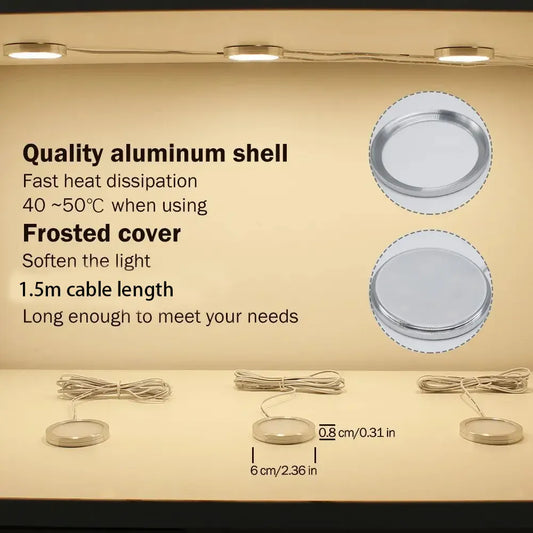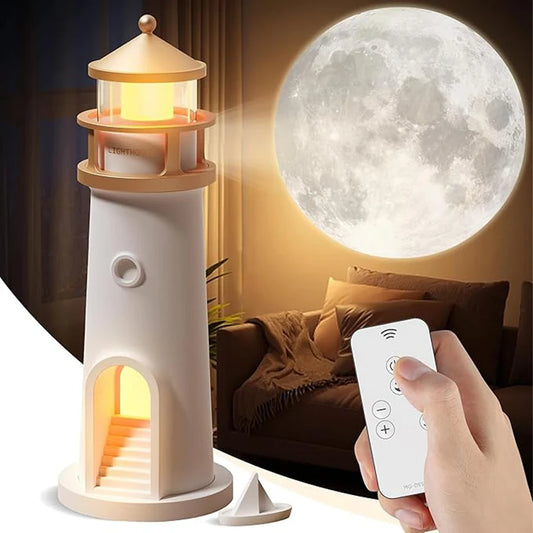
Does Under Cabinet Lighting Need a Switch?
Share
Table of Contents
- Introduction
- Why Consider a Switch for Under Cabinet Lighting?
- Types of Switches for Under Cabinet Lighting
- Professional Insights on Switch Installation
- Personal Experiences and Tips
- Conclusion
Introduction
Under cabinet lighting can dramatically enhance the functionality and aesthetics of your kitchen. However, a common question is whether these lights need a switch. This blog post explores the benefits and options for adding a switch to your under cabinet lighting, backed by professional insights and real-world examples.
Why Consider a Switch for Under Cabinet Lighting?
Convenience and Control
Having a switch for your under cabinet lighting provides convenience and control. You can easily turn the lights on or off as needed, without having to unplug them or rely on other cumbersome methods. According to the Illuminating Engineering Society (IES), effective lighting control can significantly enhance the usability of lighting systems in residential spaces.
Energy Efficiency
A switch allows you to turn off the lights when they are not needed, contributing to energy savings. The U.S. Department of Energy states that efficient lighting control systems can reduce energy consumption by up to 30%. By using a switch, you ensure that your LED under cabinet lights are only on when necessary, minimizing energy waste.
Enhanced Lifespan of Lights
Frequent on-off cycles can reduce the lifespan of traditional incandescent bulbs, but LED lights are more resilient. However, using a switch can still help prolong the life of your under cabinet lights by ensuring they are not left on unnecessarily, reducing overall usage hours.
Types of Switches for Under Cabinet Lighting
There are several types of switches available for under cabinet lighting, each with its own benefits:
In-Line Cord Switches
These switches are installed directly onto the power cord of the lighting fixture. They are easy to install and use, making them a popular choice for DIY enthusiasts.
Wall Switches
Wall switches offer a more permanent and integrated solution. They can control multiple light fixtures simultaneously, providing a unified control point for your kitchen lighting.
Touch or Tap Switches
Touch switches are often integrated into the lighting fixture itself. They provide a sleek and modern look and are very convenient to use, especially when your hands are full or dirty.
Motion Sensors
Motion sensor switches automatically turn the lights on when they detect movement and off after a set period of inactivity. This option combines convenience with energy efficiency, ensuring the lights are only on when needed.
Professional Insights on Switch Installation
Safety and Compliance
Installing a switch for under cabinet lighting must comply with electrical safety standards. According to the National Electrical Code (NEC), all electrical installations must be performed correctly to avoid hazards such as short circuits and electrical fires. If you are not comfortable with electrical work, it is advisable to hire a licensed electrician.
Placement Considerations
The placement of the switch is crucial for convenience and functionality. The IES recommends placing switches in easily accessible locations, typically at the entry points of the kitchen or near the primary workspace.
Integration with Smart Home Systems
For those with smart home systems, integrating under cabinet lighting with smart switches can provide additional control options. Systems like Google Home or Amazon Alexa can control smart switches, allowing for voice-activated control and automation.
Personal Experiences and Tips
When I remodeled my kitchen, I decided to install a touch switch integrated into the under cabinet lighting fixture. This choice not only provided a clean look but also offered convenience when my hands were messy from cooking. Here are a few tips from my experience:
- Consider Your Workflow: Place the switch where it is most convenient based on your cooking and cleaning habits.
- Test Before Finalizing: If possible, temporarily install the switch and test its placement and functionality before making it permanent.
- Think About Future Upgrades: Choose a switch type that can easily integrate with future smart home upgrades, providing long-term flexibility.
Conclusion
In conclusion, adding a switch to your under cabinet lighting offers numerous benefits, including convenience, energy efficiency, and enhanced control. Whether you opt for a simple in-line cord switch or a sophisticated motion sensor, the key is to choose a solution that fits your needs and enhances your kitchen's functionality. Always consider professional guidelines and personal workflow to make the best decision for your space.
Sources:
Adding a switch may require some additional effort, but the improved usability and efficiency it provides are well worth it.
For More Information
1. Under Cabinet Lighting Buying Guide
2. How to Choose the Best Under Cabinet Lighting for Your Kitchen
3. How To Install Under Cabinet Lighting - Step-by-Step Guides




























 />
/>
 />
/>
 />
/>
 />
/>
 />
/>